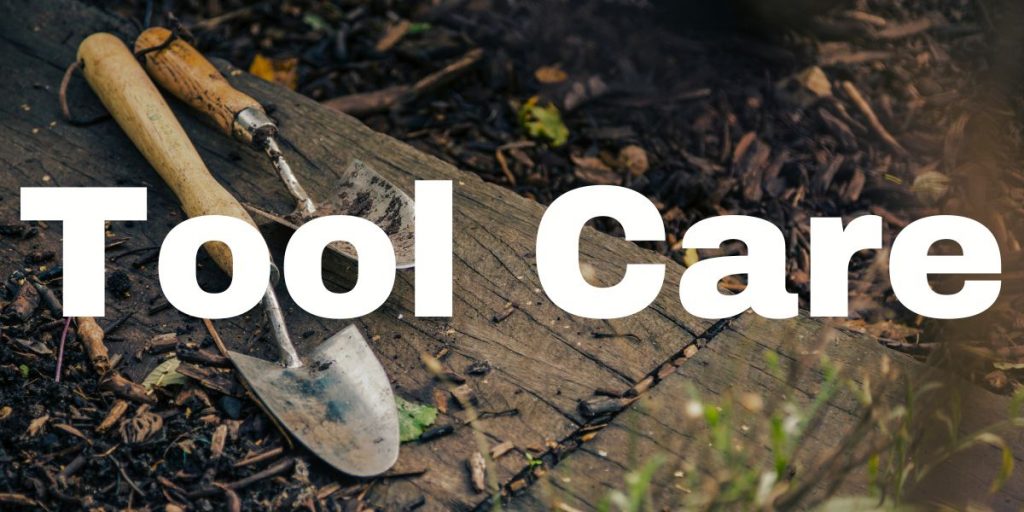Once the fall garden chores have been completed, some attention can be given to properly preparing your tools for storage until spring. By properly cleaning them and making necessary repairs before you put them away, they will be less apt to corrode over winter and they will be ready to use when you need them in the spring.
Any soil that clings to the metal surface of your tools should be removed. You will probably find it easier to wash off the larger soil patches with a strong stream of water from the hose. Small soil particles and rust spots are easily removed with sandpaper.
The cutting edges of hoes, shovels, grass whips and similar tools should be sharpened before putting them away. Use a file to sharpen the larger tools. Either a file or carborundum wheel may be used to sharpen smaller-sized implements, including trowels and hand rakes.
Grass sickles can be sharpened with a whetstone. Use an oilstone to sharpen pruning shears. Call upon the professional to sharpen your saws and mower blades.
After you have finished cleaning your tools and have sharpened the cutting edges, wipe the metal parts with an oily rag to help protect the surfaces from dust and rust. Thin, penetrating oil is best for this job. Then use a little heavier oil to lubricate the moving parts of clippers, shears, etc.
It is a good idea to check the handles of all your tools before you put them away. Rough spots can be sanded out, to avoid slivers. Weak or broken handles should be replaced. Your local hardware or garden supply store usually stocks a supply of the various types of handles. They can usually special-order the type you need, if they do not have them in stock. Finally, paint all handles with a good grade of raw linseed oil.
By painting a band or other bright-colored identification mark on all tool handles, you will make them more readily visible when they are misplaced in the garden. Should one of your neighbors borrow a tool, you will have no trouble identifying it, when it’s returned.
Check all nuts, bolts and screws to be sure they are tight and in top working order. Replace worn or rusty ones.
Give special attention to the lawn mower. If it needs sharpening or repair, don’t wait until spring. Professional technicians are so busy in the spring that it often takes a week or more to have simple jobs done. If you have everything done when the mower is not in use, there is plenty of time to be sure of a good, unhurried job.
Clean out all matted grass on top of and underneath your lawn mower. If you have a rotary mower, take off the blade and have it sharpened. If you sharpen it yourself, make sure to keep it perfectly balanced.
Drain the oil from the crankcase of the power mower and refill it immediately. Leaving it empty over winter is dangerous. It is so easy to forget in the spring and start using the mower without replacing the oil, thereby ruining the engine.
Check the spark plug. Properly clean and adjust it or replace with a new one. As a final step, oil any moving parts and completely wipe off the machine with an oily rag.
If possible, keep your tools off the floor, preferably on a rack or hanging by nails. This is especially important if you keep your tools in the garage. The salt brought in on the car over winter can corrode the metal.
It pays to keep your tools in good working order. They will last much longer and will operate more efficiently if you do.
